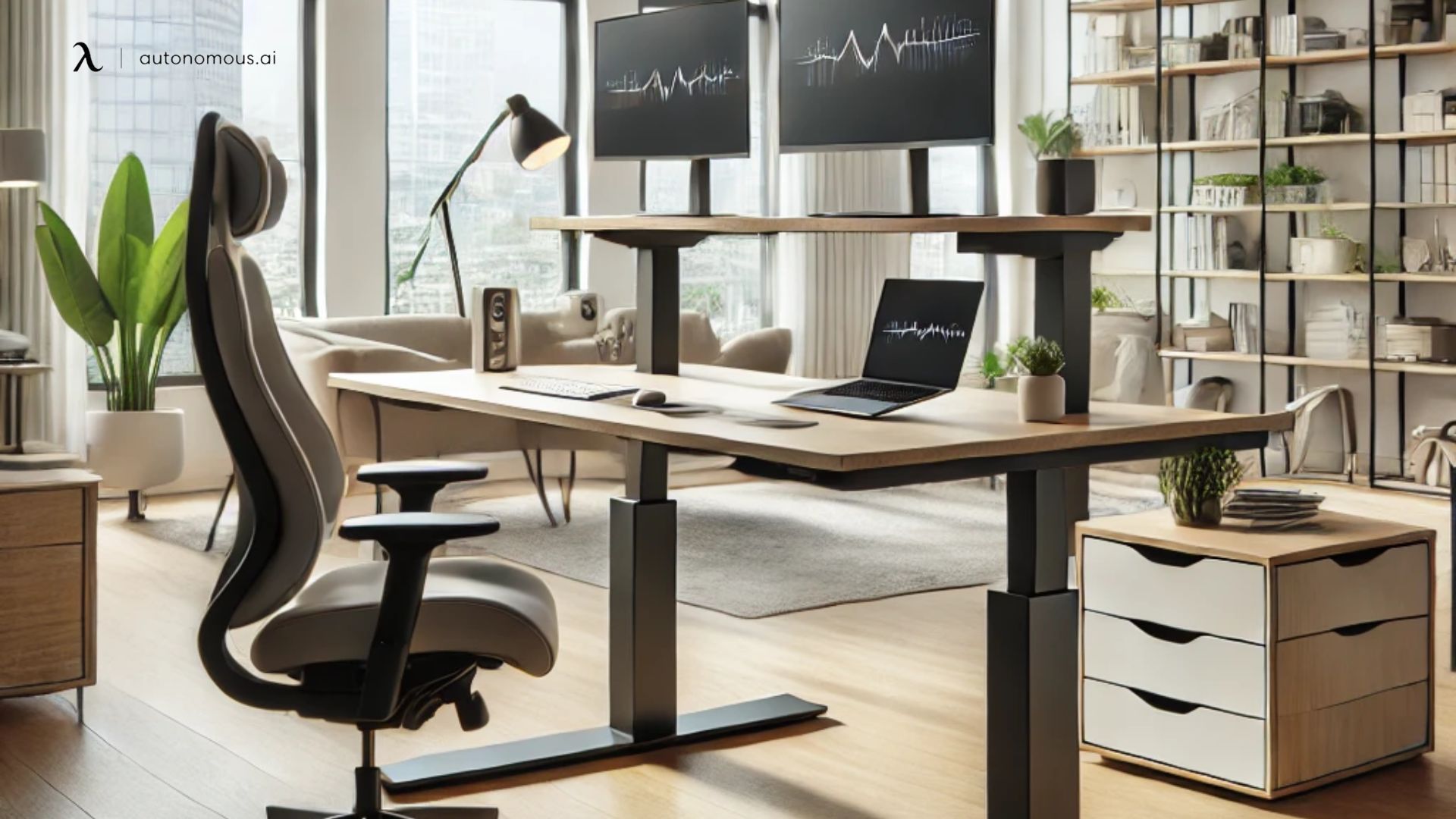
Table of Contents
As someone who spends long hours at a desk, finding the right standing desk is a game-changer. But when you’re on a budget, it can feel like a daunting task to find a high-quality option. I’ve done the research and tested some of the best standing desks under $100, so you don’t have to break the bank to boost your productivity and well-being. Here’s a rundown of the top options I found, plus some tips on how to customize your setup for maximum comfort.
Features to Look for in a Budget Standing Desk Under $100
When looking for a budget standing desk, here are some key features you should prioritize:
- Stability: Even on a budget, stability is essential. You want a desk that stays steady, even when you’re typing or working with multiple monitors.
- Adjustability: The ability to change the height easily is crucial for comfort. Look for desks with smooth height adjustments and ergonomic design.
- Material Quality: While the price may be low, make sure the desk is made from durable materials like metal frames and solid wood or MDF tops.
- Noise Level: A smooth, quiet adjustment is a must, especially for electric standing desks.
- Size: Ensure that the desk fits your workspace. You’ll want enough room for your monitor, keyboard, and other essentials.
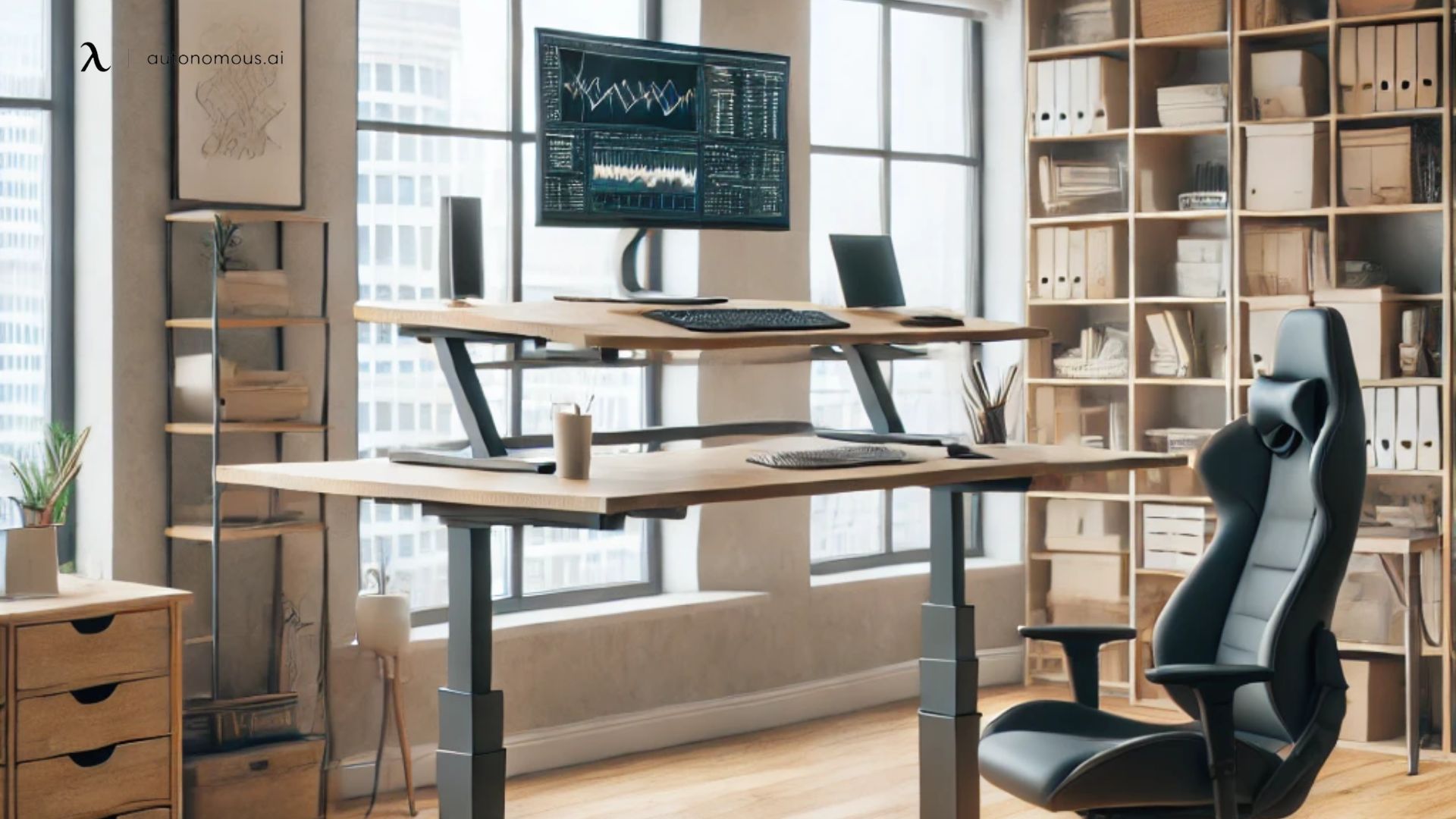
Top Standing Desks Under $100
1. SMUG Standing Desk
The SMUG Standing Desk impressed me with its modern design and the functionality of its adjustable electric sit-stand mechanism. After testing it for a few weeks, I found that this desk provides a seamless transition between sitting and standing, which is essential for long working hours. The desk’s motor allows for smooth, effortless height adjustments, ranging from 28.7" to 46.5", all at the push of a button. The LED display with memory presets makes it easy to switch between multiple user-preferred height settings, ensuring that everyone in your household or office can set it to their liking without any hassle.
One of the standout features of the SMUG Standing Desk is its sturdy construction. The T-shaped steel frame offers excellent stability even when fully extended. The solid wooden desktop, measuring 40” x 24”, provides plenty of space for your monitor, keyboard, and other desk essentials. What I really appreciate is how quiet the motor operates. Even when the desk is at its highest setting, the noise level is below 55 dB, which means you can make adjustments without disrupting the peaceful environment of your workspace.
The SMUG Standing Desk also has thoughtful extras like two hooks on either side for hanging accessories, and wire collection holes to keep your cords organized and out of sight. The eco-friendly wood finish is not only sleek but also odor-free, making the desk a great addition to any workspace. Whether you’re setting it up in your home office, gaming area, or study room, this desk blends style with functionality, all while staying affordable for those on a budget.
2. Sweetcrispy Electric Standing Desk
The Sweetcrispy Electric Standing Desk stands out as an affordable yet highly functional option for those looking to upgrade their workspace with an electric height-adjustable desk. After testing this desk, I was impressed by its sturdy build and smooth operation. The desk’s motorized adjustment system allows for a height range of 28.7” to 46.5”, which is ideal for most users, whether you’re taller or shorter. The height adjustments are controlled by a sleek LED display with three memory presets, making it incredibly easy to switch between sitting and standing positions. This feature, in particular, enhances the overall user experience by reducing the time spent manually adjusting the height.
One of the notable features of the Sweetcrispy Electric Standing Desk is its dual split-wide desktop design. The 40” x 24” workspace is spacious enough to hold multiple monitors, a laptop, and other essentials, giving you ample room for a more organized and efficient setup. The two spliced panels help reduce the weight burden during installation, making the assembly process easier.
The desk’s sturdy stainless steel frame and thickened laminated tabletop provide durability and stability, even when fully extended. During my testing, the desk proved to be highly stable, and I could work without any wobbling, even when the desk was raised to its full height. The motor operates quietly, producing less than 55 dB of noise, which ensures minimal disruption while adjusting.
For those who need additional workspace organization, the Sweetcrispy Electric Standing Desk includes two hooks and a wire hole to manage cables and accessories, helping to keep your setup clean and tidy. This desk is a great option for anyone looking to bring ergonomic comfort into their home office or study space without spending a fortune.
3. STARY Electric Standing Desk
The STARY Electric Standing Desk offers a great balance between functionality, design, and affordability. After using this desk for a few weeks, I can confidently say that it’s one of the best options under $100 for people who want an electric standing desk that provides both ergonomic benefits and a sleek appearance. The desk features a high-quality carbon steel frame that ensures maximum durability and stability, even when the desk is fully raised. The pine wood desktop is polished and gives the desk an attractive, rustic look that blends well in home offices, dorm rooms, or even living spaces.
One of the highlights of this standing desk is its multi-function control panel, which includes four memory presets. This makes it incredibly convenient to store different height positions for quick adjustments throughout the day. Whether you’re switching between sitting and standing or adjusting to a new height for a more comfortable working position, the STARY Electric Standing Desk provides a smooth transition with minimal noise. The motor operates quietly, making it ideal for quiet environments.
I was particularly impressed with the weight capacity of this desk, which can support up to 176 lbs. This means you can comfortably set up multiple monitors, laptops, or other office essentials without worrying about the desk being overloaded. The desk’s ergonomic design encourages regular movement by allowing you to easily alternate between sitting and standing positions, promoting better posture and reducing the strain of sitting for long periods.
The assembly of the STARY Electric Standing Desk was simple, with a clear assembly guide provided. The desk also features easy-to-use pre-drilled holes for attaching the frame to the desktop. Overall, this desk is a fantastic choice for anyone looking for an electric standing desk with ample workspace and a sturdy build at an affordable price.
4. Stand Up Desk Store
The Stand Up Desk Store Rolling Adjustable Height Two Tier Standing Desk is a fantastic option for those seeking mobility and ergonomics in a standing desk, without compromising on quality. This desk features a unique two-tier standing desk design that allows for the ergonomic placement of your keyboard, mouse, and monitor. During my testing, I found this layout to be incredibly convenient for anyone who prefers to keep their screen and input devices on separate levels for improved posture. The adjustable height mechanism allows you to easily raise and lower the desk in 1-inch increments, making it a versatile choice for a wide range of users.
One of the features I really appreciated with this desk is the smooth-rolling 3” locking casters. These casters allow you to easily move the desk from room to room or adjust its position within your space. The locking function ensures the desk stays securely in place once you've positioned it, providing peace of mind while working. Whether you’re rolling it across a carpeted floor or hardwood, the casters move smoothly without any effort, making it ideal for users who need to frequently move or reorganize their workspace.
The Stand Up Desk Store Standing Desk is built with a sturdy alloy steel frame and engineered wood, ensuring durability and stability. The weight capacity of the desk is 154 lbs, which is sufficient to hold your essential office equipment, including multiple monitors, a laptop, and accessories. Despite its ability to hold a substantial amount of weight, the desk remains stable, with no wobbling even when fully extended.
5. Uncaged Ergonomics Converter
The Uncaged Ergonomics Converter is a compact and portable standing desk converter that offers a simple yet effective solution for those who don’t want to invest in a full standing desk. After testing this product, I found it to be perfect for people who want to transition to a standing desk setup without the need for a complete desk replacement. The design is lightweight and user-friendly, with no installation required—simply place it on your existing desk, and you’re good to go.
One of the standout features of the Uncaged Ergonomics Converter is its adjustable height range. With four height settings (3”, 6”, 10”, and 14”), you can easily switch between sitting and standing positions, whether you’re using a laptop or a single monitor. The converter’s compact 27.5” x 19.5” top panel provides enough space for your essentials, like a laptop, mouse, and keyboard, without overcrowding your workspace.
During my use, I appreciated the converter’s stability. The sturdy design made it easy to raise and lower the desk without wobbling, which can sometimes be an issue with other converters in this price range. The aluminum and MDF materials used are durable and offer good weight support, handling up to 20 lbs. While it's not meant for heavy-duty setups, it’s more than enough for light workstations.
For those who don’t have space for a full standing desk, the Uncaged Ergonomics Converter is a solid choice. It’s portable, easy to set up, and a cost-effective way to reap the benefits of standing while working. Whether you’re working from home or in a small office, this converter can transform your workspace and improve your posture with minimal hassle.
How to Customize Your Budget Standing Desk
Even if you're on a budget, you can upgrade your standing desk setup to enhance comfort and productivity. Here are a few tips:
1. Invest in an Anti-Fatigue Mat
Standing for long hours can be tough on your joints, so an anti-fatigue mat helps reduce strain on your feet and legs. These mats encourage subtle movement while you stand, making it easier to remain comfortable throughout the day and helping to reduce fatigue during long work sessions.
2. Use a Keyboard Tray
A keyboard tray can help keep your arms at a more ergonomic angle, reducing strain on your wrists. This simple addition ensures that your setup is better aligned with your posture and can reduce the risk of developing repetitive strain injuries over time.
3. Monitor Stand
Elevate your monitor to eye level for a more ergonomic sitting or standing position, preventing neck strain. You can use a monitor arm or a laptop stand to position your screen at the perfect height, ensuring a more comfortable and healthier working posture.
4. Additional Customizations
For more comprehensive standing desk accessories, check out a wide range of options that can improve your standing desk experience.
If you're looking for a standing desk with cable management, there are several models that help keep cords organized and out of sight.
Explore standing desk storage to maximize your desk space and keep your essentials within reach while maintaining a clutter-free workspace.
If you’re using dual monitors, consider a dual monitor stand for better screen organization and improved ergonomics.
FAQs
Are Cheaper Standing Desks Worth It?
Yes, standing desks under $100 can still be highly effective. While they may not have premium features like advanced motors or high-end materials, many budget options provide the essential adjustability to promote better posture and health. When shopping for adjustable desks under $100, focus on sturdy construction, smooth height adjustments, and design compatibility with your workspace needs.
What is a Reasonable Price for a Standing Desk?
A reasonable price for a standing desk typically ranges from $100 to $300 for a basic model. For those looking for an adjustable standing desk under $100, there are solid options that offer manual adjustments, which provide an affordable alternative to the electric models. If you’re willing to stretch your budget slightly, desks under $150 often come with additional features like more robust frames and better height ranges.
What is a Cheap Alternative to a Standing Desk?
If a full-standing desk is beyond your budget, consider an adjustable desk under $100 or a standing desk converter. These converters sit on top of your existing desk, allowing you to raise your monitor and keyboard to a comfortable standing height. It’s a budget-friendly solution for anyone wanting to experience the benefits of standing while working, without committing to a full desk replacement.
Why Are Standing Desks So Expensive?
Standing desks can be expensive due to their high-quality components like motors, frames, and durable materials. Premium models often feature electric motors for smooth adjustments, heavier weight capacities, and additional accessories such as cable management systems. However, if you’re looking for something more affordable, standing desks under $150 are available, focusing on providing basic features without compromising performance.
Will Insurance Pay for a Standing Desk?
Some health insurance plans or employers may cover the cost of a standing desk under $100 or even a more expensive adjustable option, especially if it's deemed necessary for health reasons. It’s worth checking with your insurance provider or HR department to explore potential benefits for ergonomic office equipment.
How Much Should I Spend on a Standing Desk?
The amount you should spend on a standing desk depends on your needs. If you’re looking for a basic, adjustable desk under $100, you can find great options with manual adjustments that still offer the core benefits of a standing desk. For electric models or desks with additional features like preset memory settings, you can expect to spend anywhere from $150 to $500.
Are Cheap Standing Desks Good?
Cheap standing desks under $100 can still be a great option if you’re on a budget. While they may not have all the features of higher-end standing desk models, many adjustable standing desks under $100 offer smooth height adjustments and solid stability. They provide the core benefits of standing desks—improving posture and productivity—without the hefty price tag.
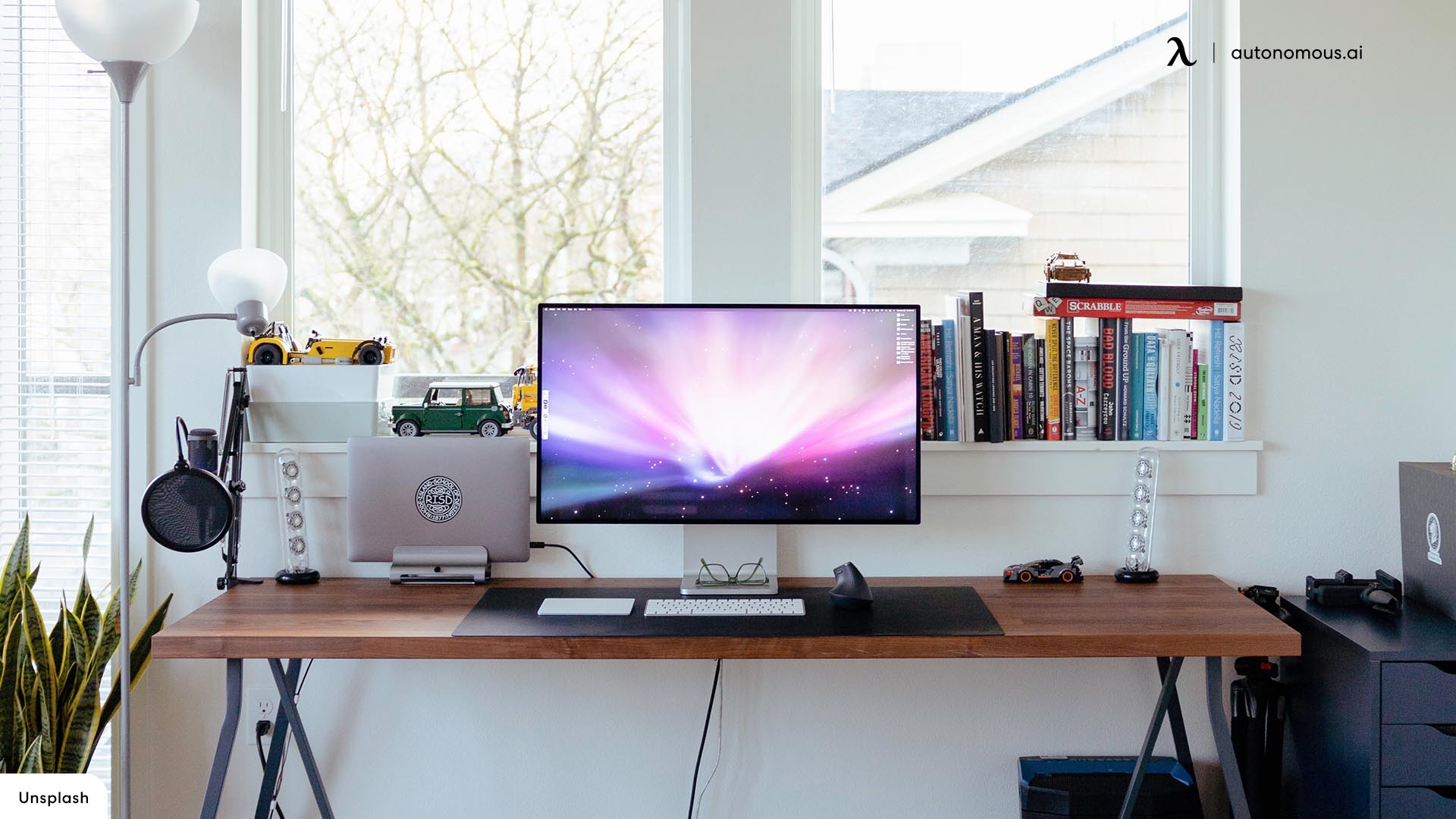
Upgrade Your Workspace with Autonomous Desk 5
If you're ready to make a serious upgrade to your workspace, the Autonomous Desk 5 is an excellent choice. This desk combines sleek, modern design with top-notch functionality to create the ideal standing desk for any environment, whether it’s for your home office, gaming setup, or creative studio. After using the Autonomous Desk 5, I was immediately impressed by the build quality and the seamless user experience it offers.
The Autonomous Desk 5 features a minimalist, durable C-frame design made from SPCC steel, ensuring maximum stability even when the desk is fully extended. The high-density fiberboard (HDF) desktop, which measures 53" x 29", provides ample space for your monitors, keyboard, and other essentials, while the velvet-touch finish adds a sophisticated touch and is resistant to scratches. It comes in three colors—Meteor Grey, Titanium White, and Stone Desert—so you can choose the one that best suits your office aesthetic.
Equipped with a dual-motor system, this desk offers smooth, quiet height adjustments ranging from 30.7" to 49.7". The lifting speed of 1.2 inches per second ensures you can easily adjust the desk's height, and the noise level stays as low as 40 dB, which is perfect for any quiet workspace. With a weight capacity of 330 lbs, it can support heavy-duty setups with multiple monitors, laptops, or even gaming rigs.
One of the standout features of the Autonomous Desk 5 is its integrated cable management system. With built-in cable trays and power outlets, it helps keep your workspace clean and organized by reducing cable clutter. The desk is easy to assemble, and the included warranty gives you peace of mind that your investment is protected.
Conclusion
Switching to a standing desk doesn’t have to be expensive. There are plenty of great options under $100 that offer ergonomic benefits, stability, and adjustability. Whether you opt for a full standing desk or a simple converter, you can create a healthier and more productive workspace without breaking the bank. If you’re willing to invest a bit more for added features or durability, you can also explore desks in the under $200 and under $300 range. For example, the best standing desks under $200 provide excellent value, and the best standing desks under $300 offer more robust features, ideal for those seeking a balance of quality and budget.
Spread the word
.svg)








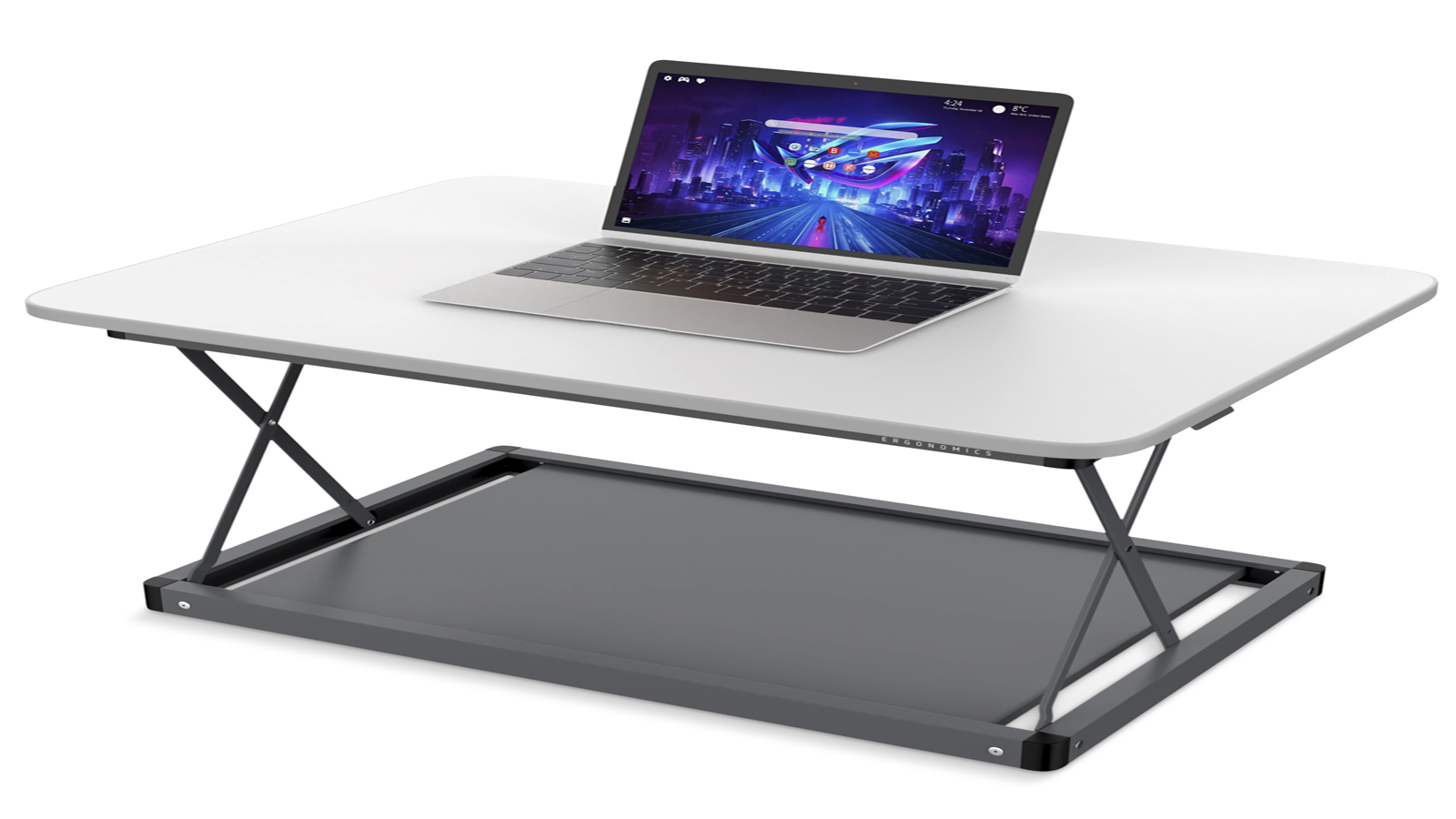


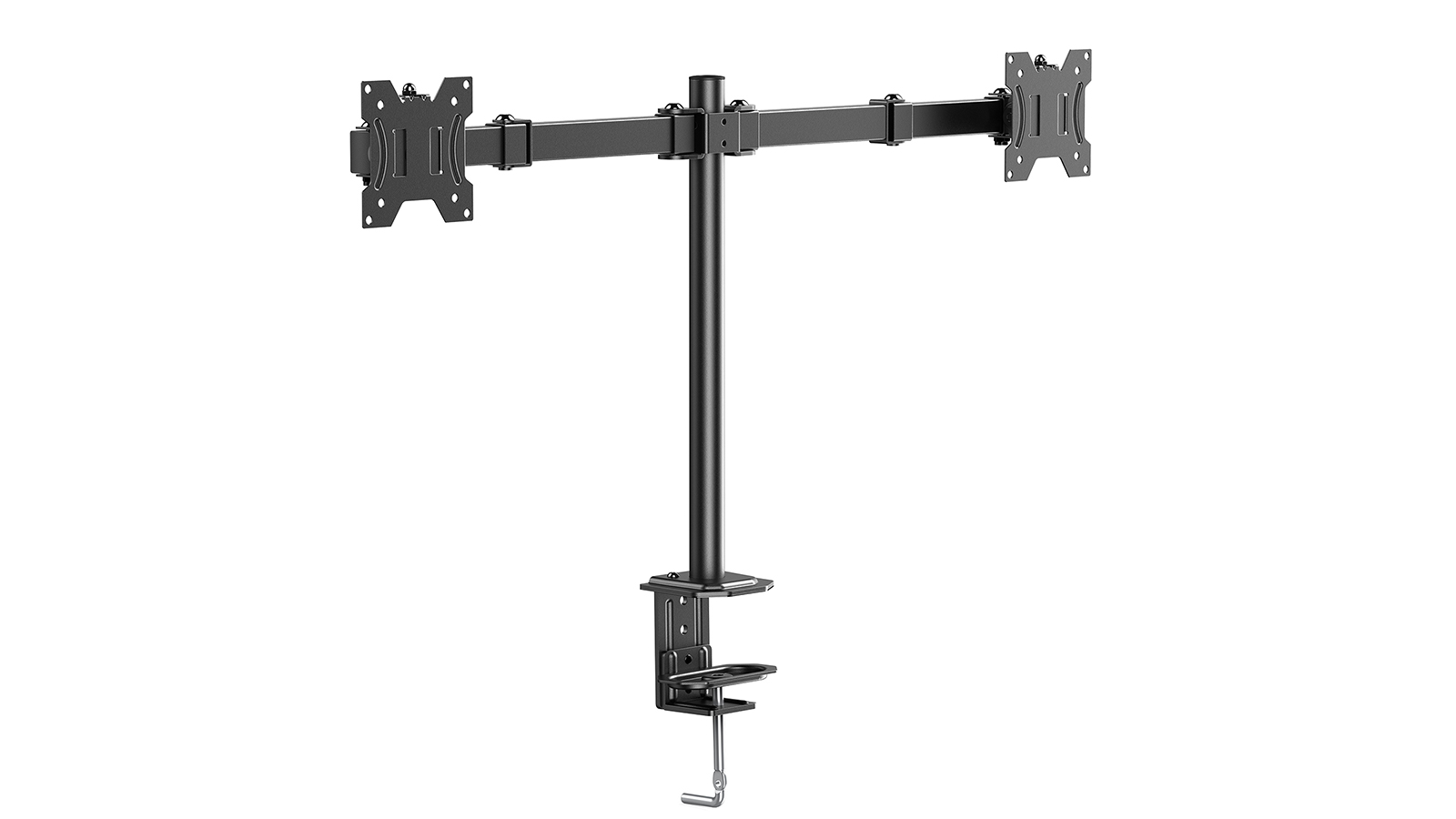
.jpg)
.webp)






